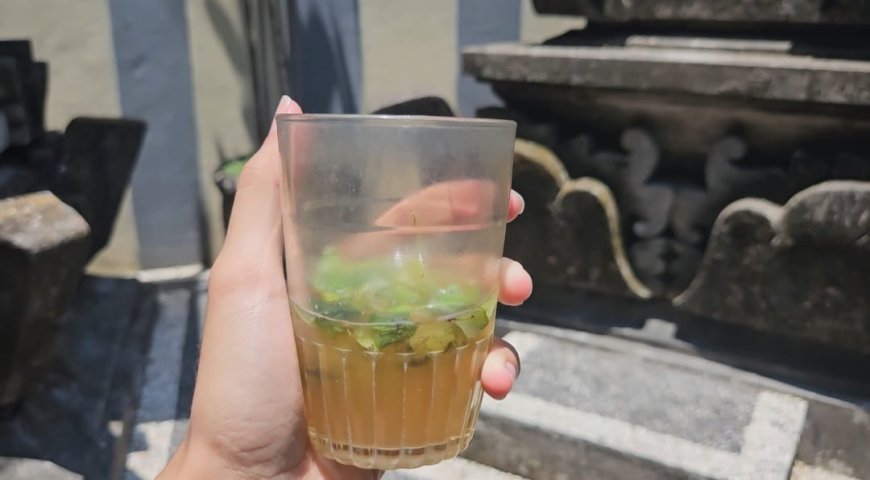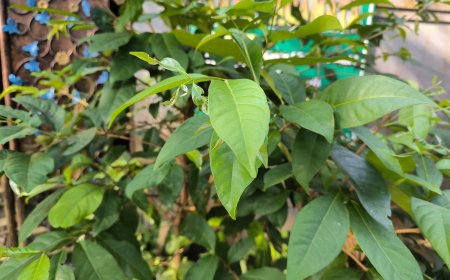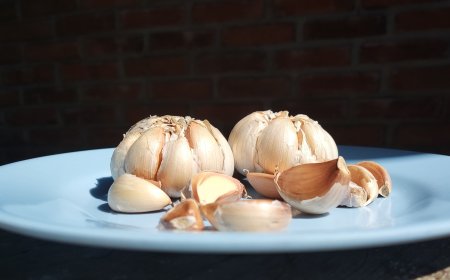Benefits of Clover Leaves: Traditional Treatment for Coughs and Colds
The use of cloverleaf leaves in the traditional Usadha Bali concoction shows potential in alleviating symptoms of coughs and colds, thanks to its active components, including flavonoids, tannins, saponins, and vitamin C. We can try making this remedy using readily available ingredients such as belimbing wuluh and cloverleaf leaves.

Usadha Bali is a traditional healing system originating from Bali, Indonesia. One of the plants commonly used in traditional Balinese medicine to address coughs and colds is the cloverleaf plant, known as semanggi. Semanggi leaves (Oxalis corniculata) are believed to have properties that can help alleviate symptoms of coughs and colds. This page will explain various important aspects of using semanggi leaves as a traditional remedy, including its constituents and methods of use.
Semanggi leaves contain several active compounds that can have positive effects in addressing coughs and colds. These include flavonoids, tannins, saponins, and vitamin C. Flavonoids have antioxidant properties that can boost the immune system, while tannins and saponins possess anti-inflammatory properties that can reduce inflammation in the respiratory tract. The presence of vitamin C can also enhance overall immunity.
Benefits of Semanggi Leaves for Coughs and Colds:
a. Antioxidant and Immunomodulatory: Flavonoids and vitamin C in semanggi leaves act as antioxidants that combat free radicals and strengthen the immune system, helping to fight infections causing coughs and colds.
b. Anti-Inflammatory: Tannin and saponin content can alleviate inflammation in the respiratory tract, reduce irritation, and facilitate breathing, thereby relieving symptoms of coughs and colds.
c. Natural Expectorant: Semanggi leaves are known to have expectorant properties, assisting in clearing mucus and phlegm from the respiratory tract, thus alleviating coughs and colds.
Explanation of the Processing Steps of Semanggi Leaves and Belimbing Wuluh to Alleviate Coughs and Colds The required ingredients include belimbing wuluh, semanggi leaves, and arak. The necessary tools include candles, mortar and pestle, and a glass.
Clean Semanggi Leaves Thoroughly: Firstly, semanggi leaves need to be thoroughly washed to remove dirt and possible residues. Cleaning the leaves thoroughly ensures that the materials used in this traditional remedy are free from contaminants and ready for processing.
Burn Belimbing Wuluh using a Candle: Next, belimbing wuluh is burned using a candle. This burning process aims to change the color of the edges of belimbing to brown/black. This color change can facilitate the crushing of belimbing wuluh later. Additionally, the burning process can impart a specific aroma and taste that may influence the properties of the resulting traditional medicine.
Crush Semanggi Leaves and Belimbing Wuluh: After burning belimbing wuluh, place it in the mortar along with the previously cleaned semanggi leaves. The crushing process is performed to break down and mix both ingredients evenly. This step is crucial for releasing active compounds from semanggi leaves and belimbing wuluh, making their benefits more accessible.
Prepare Arak and Pour into the Glass: Prepare arak and pour it into the glass. Arak is used as a diluting and binding agent for the active compounds extracted from semanggi leaves and belimbing wuluh. It can also provide a different taste to this traditional concoction.
Mix Crushed Ingredients into the Arak Glass: After crushing semanggi leaves and belimbing wuluh, add the mixture to the glass containing arak. Stir the ingredients until they are evenly mixed in the arak.

Traditional Drink From Clover Leaves ( Photo Source: Private Collection)
Ready to Drink: Once all the above steps are completed, the traditional concoction of semanggi leaves and belimbing wuluh is ready to drink. This beverage is expected to provide a soothing effect on the symptoms of coughs and colds, combining the beneficial effects of the active compounds found in semanggi leaves and belimbing wuluh.
It's important to note that the use of arak in this remedy can affect health and alter the body's response. Consultation with a traditional healer or healthcare professional is advised before trying this treatment, especially if you have specific health conditions or are taking certain medications. Always use ingredients wisely and according to individual needs.
Semanggi leaves are believed to have healing properties for coughs and colds according to the traditional Usadha Bali practice. The active compounds in semanggi leaves, such as flavonoids, tannins, saponins, and vitamin C, provide a scientific basis for their use in traditional medicine. However, it is crucial to approach traditional remedies with wisdom, consult with experts, and not disregard conventional medical approaches when necessary. Thus, the use of semanggi leaves can be one holistic and sustainable option in maintaining overall health.





























































